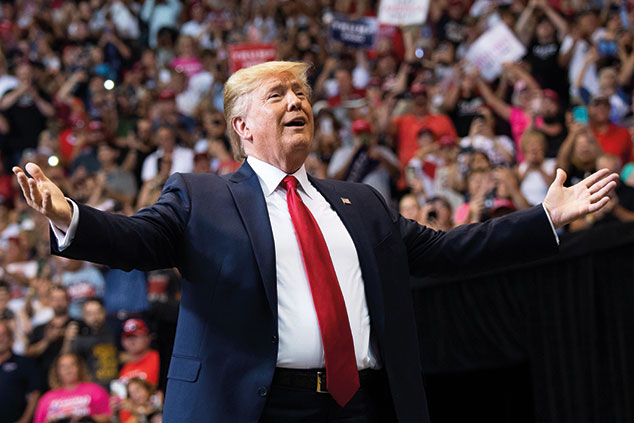
The unexpected trade-war escalation roiled markets. Monday was the worst day of the year so far for US stocks, with the S&P 500 shedding 3%. That came on the heels of a 3.1% slide last week, the worst weekly performance of the year so far. The FTSE 100 lost 2.5% on Monday, its worst performance since December last year. Powell did his “best impression” of a “Fed chair making his own data-driven decision”, says Felix Salmon on Axios, but no one was fooled about what had forced his hand. His insistence that the rate cut was driven by “trade policy uncertainty” is belied by the fact that US growth remains strong and unemployment is at its lowest level since 1969.
In any case, falling interest rates are not “much of a reason to buy stocks”, says Justin Lahart in The Wall Street Journal. With the second-quarter earnings season in full swing, it is hard to describe company results as “anything more than a disappointment”. FactSet data shows that on current estimates, S&P 500 earnings slipped 2.2% in the second quarter compared with the year before. Yet US shares are still “dancing near record highs”.
Easy money won’t save markets
Those expecting rate cuts to elongate the bull run should look at the historical record, adds Michael Wilson of Morgan Stanley. The start of past rate-cutting cycles in 2001 and 2007 heralded hard periods for stocks – as they should, given that rate cutting usually accompanies slowdowns.
As for the trade war escalation, that is “not a new risk, it was simply overlooked”. That’s why the return of Trump’s “tariff man” act elicited a much bigger market reaction than Powell’s widely anticipated rate cut announcement. US investors no longer believe that trade wars are “easy to win”, says Oliver Jones of Capital Economics. Last summer the conflict was regarded as “almost a non-issue”, but with no resolution in sight, markets are now heeding the Fed’s message that the global trade situation brings real downside risk.
With rhetoric on both sides becoming heated – China this week accused Washington of “deliberately destroying international order” – people should stop asking “when will the trade war end”, says Dan Harris on the China Law Blog. Economists who say that both sides will gain from a deal are neglecting the wider political picture. Domestic pressures and geopolitical imperatives mean that this conflict is not going away. “The US-China cold war has begun” (see below).